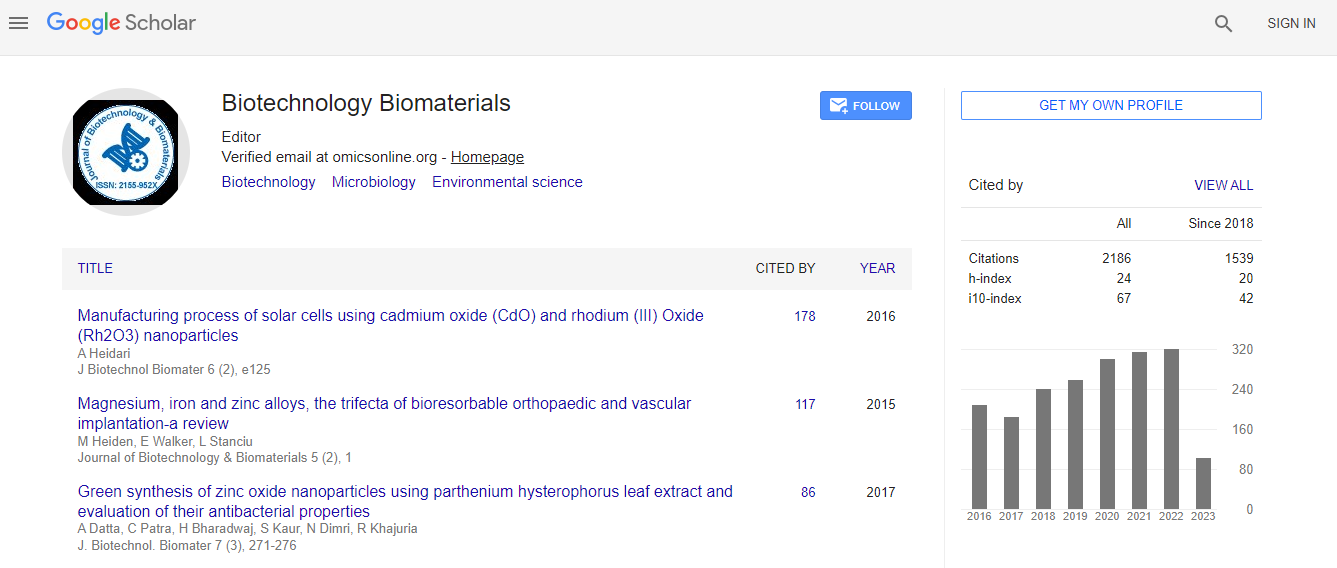Microbiome-Inspired Biomaterials: Harnessing the Power of Symbiosis for Therapeutic Applications
*Corresponding Author: Nariman Shahid, Faculty of Pharmacy, The University of Lahore, Pakistan, Email: narimanshahid12334@gmal.comReceived Date: Nov 05, 2024 / Published Date: Nov 29, 2024
Citation: Nariman S (2024) Microbiome-Inspired Biomaterials: Harnessing the Power of Symbiosis for Therapeutic Applications. J Biotechnol Biomater, 14: 422.
Copyright: © 2024 Nariman S. This is an open-access article distributed under the terms of the Creative Commons Attribution License, which permits unrestricted use, distribution, and reproduction in any medium, provided the original author and source are credited.
Abstract
Microbiome-inspired biomaterials are an emerging class of materials that leverage the symbiotic relationships within microbial communities to develop innovative therapeutic solutions. The human microbiome, consisting of trillions of microorganisms, plays a crucial role in maintaining health by modulating immune responses, metabolism, and tissue homeostasis. Inspired by the complex interactions within these microbial ecosystems, researchers are developing novel biomaterials that mimic or integrate microbiome-like functionality for medical applications. These biomaterials have the potential to enhance tissue regeneration, modulate immune responses, deliver drugs, and restore microbiome balance in the human body. This paper explores the principles behind microbiome-inspired biomaterials, their design strategies, and the therapeutic applications in areas such as wound healing, infection control, and personalized medicine. Challenges in translating these concepts into clinical practice, including safety concerns, scalability, and ethical considerations, are also discussed

 Spanish
Spanish  Chinese
Chinese  Russian
Russian  German
German  French
French  Japanese
Japanese  Portuguese
Portuguese  Hindi
Hindi 
